 Mysteries
Mysteries  Mysteries
Mysteries  History
History 10 Surprising Stories About the Texas Rangers
 Humans
Humans 10 Philosophers Who Were Driven Mad by Their Own Theories
 Miscellaneous
Miscellaneous 10 Video-Game-Worthy Weapons and Armors from History
 Weird Stuff
Weird Stuff 10 Psychics Who Accurately Predicted Wartime Events
 The Arts
The Arts 10 Pieces of Art Inspired by a Broken Heart
 Health
Health 10 Science Fiction-Sounding New Medical Treatments
 History
History 10 Surprising Facts About the Father of Submarine Warfare
 Space
Space Ten Astonishing New Insights into Alien Worlds
 Weird Stuff
Weird Stuff 10 Bizarre Summer Solstice Rituals Still Practiced Today
 Mysteries
Mysteries Top 10 Haunting Facts About the Ghost Ship MV Alta
 History
History 10 Surprising Stories About the Texas Rangers
 Humans
Humans 10 Philosophers Who Were Driven Mad by Their Own Theories
Who's Behind Listverse?

Jamie Frater
Head Editor
Jamie founded Listverse due to an insatiable desire to share fascinating, obscure, and bizarre facts. He has been a guest speaker on numerous national radio and television stations and is a five time published author.
More About Us Miscellaneous
Miscellaneous 10 Video-Game-Worthy Weapons and Armors from History
 Weird Stuff
Weird Stuff 10 Psychics Who Accurately Predicted Wartime Events
 The Arts
The Arts 10 Pieces of Art Inspired by a Broken Heart
 Health
Health 10 Science Fiction-Sounding New Medical Treatments
 History
History 10 Surprising Facts About the Father of Submarine Warfare
 Space
Space Ten Astonishing New Insights into Alien Worlds
 Weird Stuff
Weird Stuff 10 Bizarre Summer Solstice Rituals Still Practiced Today
Top 10 Rumors That Nearly Destroyed Companies
It is amazing how quickly a rumor can spread in today’s world of social media, but don’t be fooled into thinking urban legends are a new phenomenon. Word of mouth has always been an effective tool in flaming the fires of controversy. A juicy story always finds an audience, often with disastrous effects. Here are a list of rumors that nearly destroyed companies reputations.
10 B.S. Myths We Believe Because Of Advertising
10 Pop Rocks and Coke
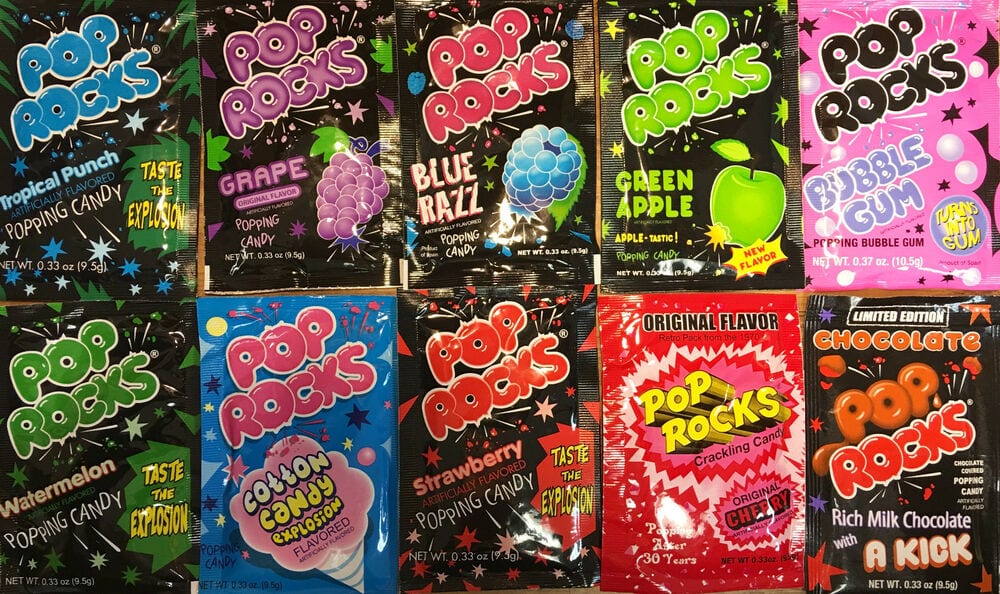
Those who grew up in the 80’s will never forget the first time we heard the tale of John Gilchrist, the actor who played Little Mikey in the Life cereal commercials. For me it was my cousin while we were sitting on the swings at the playground behind my house. He told me Mikey was dead, had in fact died when his stomach exploded after he ate Pop Rocks candy and then drank a Coca-Cola. The carbonation of the soda caused the candy to expand too rapidly and the stomach just couldn’t contain it.
It was never clear where the story found its start, but it moved through the masses like wildfire. People were daring one another to try it, and children were forbidden from purchasing the crackling candy treat!
The fact that none of this was even remotely true didn’t seem to matter, and Pop Rocks sales began to feel the sting. General Mills, the parent of Life Cereal, decided it was time to take action. The launched a national ad campaign to show that little Mikey was still very much alive, a campaign that only helped to further the rumor mills as now people began to claim he was not the real Mikey but a look-a-like.
Eventually the story was discredited, but not before doing its damage. Pop Rocks candy was discontinued for a while in the mid 80’s but luckily for us it has since made a comeback.
And the safety of this fun filled candy? Well it has been thoroughly tested by the FDA and even the MythBusters took a shot at this long-lived rumor finding it to be totally without merit.
9 Bubble Yum and Spider Eggs
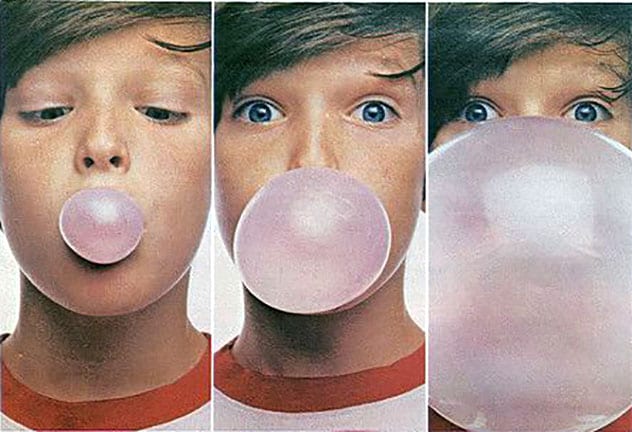
In 1976, Life Savers introduced the first soft chewing gum to the market. Bubble Yum! We all know it and we all love it, but there was a time when Bubble Yum was feared from coast to coast!
Bubble Yum hit the market and was an instant hit quickly becoming the number one gum in the country. But with popularity often comes concern and people began to question how they made it so soft? When the public didn’t get the answers they were looking for, well, they simply made them up.
It was 1977 when the story first found root. With such a soft texture it was inconceivable that science couldn’t have made such a breakthrough, right? Obviously, there could only be one possible explanation. The company had to be using spider eggs to give the gum that light, stringy consistency.
It was a silly rumor, but it managed to catch hold and the public began to freak! Sales took a hit as people stopped began to avoid Bubble Yum. Life Savers tried to dispel the rumors, but the tale of arachnid laced gum was moving quicker than their PR department could. In a quote to People Magazine, Life Savers’ president William Mack Morris said that, “Fighting the rumor was like punching air.”
Life Savers was in a pickle and they had to do something to keep their profits from falling. They launched a full-page ad in newspapers across the country with a headline that read “Somebody is Telling Very Bad Lies About a Very Good Product.” It was a Hail Mary, but it worked! The story was debunked, the people were relieved, and Bubble Yum continued to live to blow another day!
8 Taco Bell mixes its beef with the family pets
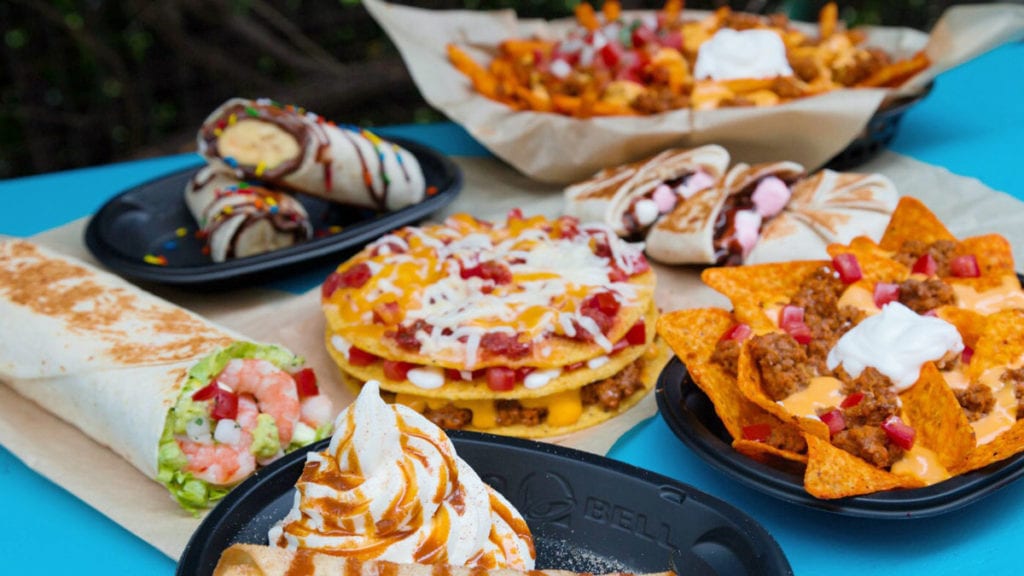
Who doesn’t love Taco Bell? Seriously, you’re out late, you get hit by the munchies and then you see it, a glowing bell beacon shining on the horizon.
Taco Bell has been around since 1962 but in 2011 a rumor began that nearly brought this fast food Goliath to its knees.
It is believed the rumor started because of Taco Bell itself after releasing a statement that their meat was 88% beef. In January of 2011 a class action lawsuit was brought against the company stating false advertisement. They claimed that calling their product “beef” was misleading as they used a meat mixture and that it was 65% additives, preservatives and binders.
Taco Bell fired back maintaining their product was “88% beef and 12% secret recipe”.
The story might have died there, floating in the Abyss of frivolous lawsuits had the Weekly World News not run a satirical article regarding the whole ordeal. In the article they claimed to have investigated and discovered Taco Bell was importing cat and dog meat in from China!
The restaurant released its ingredients to the public and the FDA confirmed that it consisted of beef, water, Mexican spices and other flavors, all of them Fido free. The law firm who had filed the suit dropped faster than Taco Bell could serve up a Crunch-wrap Supreme leaving its fans, once again, safe to make a run for the border.
7 Snapple and the KKK
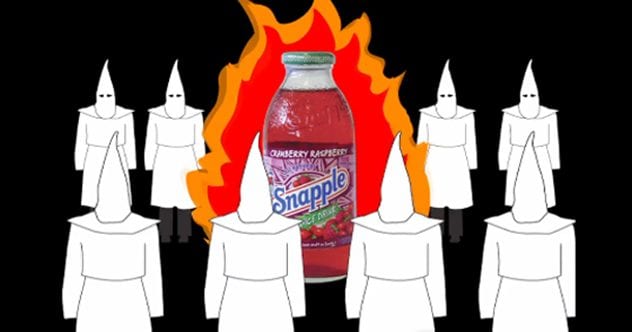
In the mid 90’s Snapple found itself the center of a few rumors. The first I remember well as I was in high school and it was the sort of rumor that flourishes in High School. The rumor involved Snapple bottles and certain parts of the male anatomy getting stuck. While I cannot attest to the validity of these rumors, nor can I speak on the origin of them, I can talk about another rumor that befell this tasty beverage company.
It all started when Snapple released its Iced tea line featuring a portrayal of the Boston Tea Party that included a Ship in a harbor. Harmless enough, or so the company originally thought, until that is, someone decided that ship in the harbor was depicting scenes of slavery. Snapple jumped on it and began changing the images as to not offend anyone, but it was too late. Word was out and the public was out for blood. You see there was a K on the side of every Snapple bottle, and since they were proudly displaying slave ships there was only one thing that K could mean. Snapple was obviously in cahoots with Ku Klux Klan.
Snapple founders, Hyman Golden, Leonard Marsh and Arnold Greenberg, went on MTV and tried to dispel the rumors stating, “How can three Jewish boys from Brooklyn support the Klan?”
They added the words “Boston Tea Party” to their labels, and the words “Kosher Pareve” to the K, a symbol that can be found on numerous products to show that a product is Kosher.
No one really knows where these stories found their origin but thanks to some quick-thinking Snapple managed to bounce back and we are still blessed with their wonderful fruit juicy goodness today.
6 Syringes in Pepsi
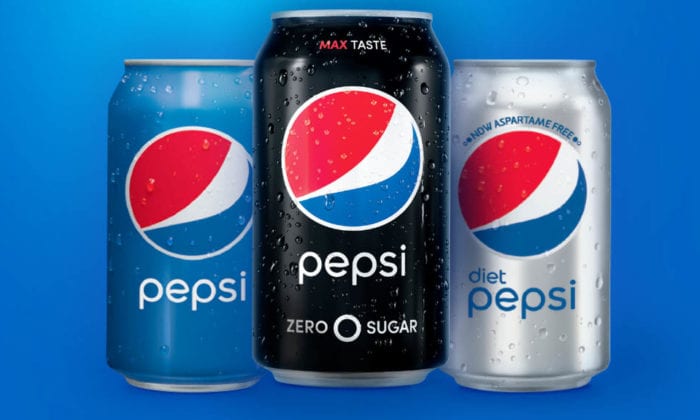
In 1990, a store clerk in eastern Ontario discovered something in a Pepsi bottle he at first mistook for a straw. Upon closer inspection however, the item was revealed to be syringe. The bottle was pulled from the shelf and turned over to the offices of Health and Welfare Canada. A full investigation was launched but no official resolution was reached. It was believed the likely culprit was a disgruntled employee at the EastCan Beverages bottling company Ottawa, Ontario. The incident was never repeated but it might have been the precursor to the 1993 Pepsi syringe panic. Once again, hypodermic needles and the famous red, white and blue branded cola met up, but this time to much greater effect!
In June of 1993, stories began to flood the papers regarding syringe-laden cans of Pepsi. The first came out of Tacoma, Washington on June the 9th after an 82-year-old man claimed he looked inside his can of Diet Pepsi to see if there was a prize. More reports followed, over 50 in total, all scattered throughout the country. Most claimed they found needles but there were reports of bullets, screws and drug paraphernalia.
Product tampering was quickly ruled out by the FDA. What they discovered instead was the rumor, combined with people hoping to make a quick buck at Pepsi’s expense, had set the whole thing in motion. It was believed that Pepsi Co. would have no choice but to pay out cash to keep people from taking them to court. What the would-be con artists didn’t realize was that, aside from the case in Tacoma, all the incidents had already been proven false.
In the end some twenty people were arrested, and most the others withdrew their claims. Pepsi launched a campaign reassuring customer’s their products were safe and brought the press into the plants to demonstrate that it would be virtually impossible to place objects into cans during the bottling process.
What about that first case? There were a few unsolved mysteries, like the fact that the needle was bent in a way suggesting it came from an insulin user, as they often discard syringes in a similar fashion, but neither the man nor his wife used insulin. To further add to the confusion, the can of soda the needle was discovered in was Diet Pepsi, however, the case it originated from was regular Pepsi making this one a head scratcher for the ages.
10 Products Which Were Invented In Unusual Ways
5 Procter and Gamble Worship Satan
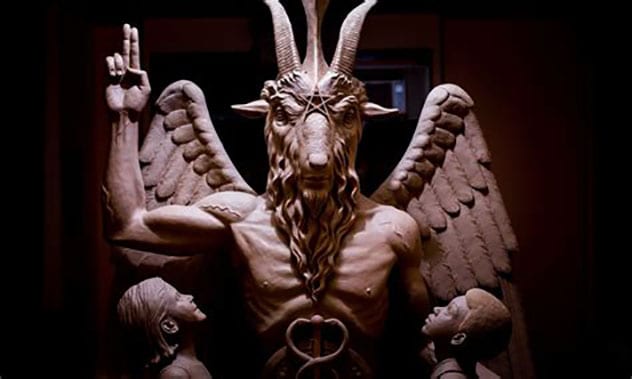
On March 1, 1994, the President of Procter & Gamble appeared on the Phil Donahue Show and announced that due to the openness of society, he was coming announcing his association with the church of Satan. He shocked audiences by announcing that a portion of P&G profits were also donated to the church. Phil, obviously shocked, asked the man if announcing this on national television will have a negative effect on business. The President looks straight into the camera and replies, “There are not enough Christians in the United States to make any difference.”
The problem was, no acting President of P& G was ever on Donahue. But why let a pesky thing like facts get in the way? People began looking for clues in products. They pointed at the “man in the moon” logo claiming they saw, in the swirls of his hair and beard, devil horns and a triple 6. They also referred to the thirteen stars as more proof. The company explained that the thirteen stars were an homage to the original thirteen colonies of the United States, and the man in the moon was simply popular at the time the logo was created, but it didn’t seem to help. In 1991 they modified the logo and a few years later they dropped it altogether.
That seemed to work, at least for a while, but in 1999 the whole thing started again, only this time it was said to be the Sally Jesse Raphael Show instead of Donahue. The facts were once again put under scrutiny and found to be lacking.
It was suspected that competing company Amway, had part in the rumor and several lawsuits were filed against them, and in 2007 a jury agreed, awarding P & G over $19 million dollars in damages.
4 Glass in Girl Scout Cookies

Ah, those adorable little girl scouts standing outside of Walmart peddling those addictive culinary treats. I have assumed numerous times those cookies might be laced with something, but never anything sinister! In 1985 an incident of glass being found in these delectable delights hit the papers, and then another, and another. Before long it was a conspiracy not unlike that of Pepsi. People were claiming they were cut after biting a cookie, or they opened their boxes and found a surprise syringe inside.
The FBI was called, and the great cookie recall began but oddly enough the scandal didn’t hit the Girl Scout organization as bad as some predicted. It would seem people wanted their cookies and they didn’t care about the stories. It was predicted the organization would lose over $1 million in sales, but the actual loss was closer to $300,000.00.
No pattern of tampering was ever discovered, and it was believed the incidents were pranks or people seeking attention. The Girl Scouts changed their box design to prevent tampering and everything was business as usual. Or was it?
3 The Girl Scouts and Planned Parenthood
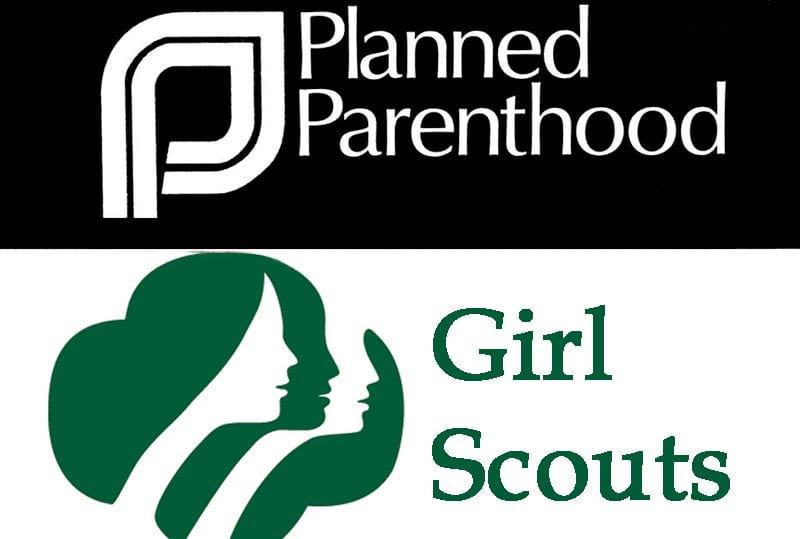
It would seem people weren’t quite ready to leave the Girl Scouts alone. In late 2015 a group of parents began to take umbrage with the Scouts when they heard that sales from their cookies helped to fund Planned Parenthood. Most likely this rumor found its beginnings in 2012 after, then CEO, Kathy Cloninger said on the Today Show that the Girl Scouts worked with various churches, YMCA’s and Planned Parenthood to help bring information-based sex ed programs to the girls. There was never any mention of financial support and when asked it was denied but that didn’t stop a series of viral videos from hitting the internet.
The flames were further fanned by an opinion piece that briefly ran from Fox News where it was discussed how someone had to turn away their neighbor when she came selling cookies because they supported Planned Parenthood.
The Girl Scout Organization let it be known that their affiliation with certain organizations is strictly educational and that one hundred percent of the money from cookie sales is retained by the them. Sales had taken a hit but fortunately they rebounded, however, this rumor still surfaces online from time to time.
2 KFC Chickens Are Genetically Engineered
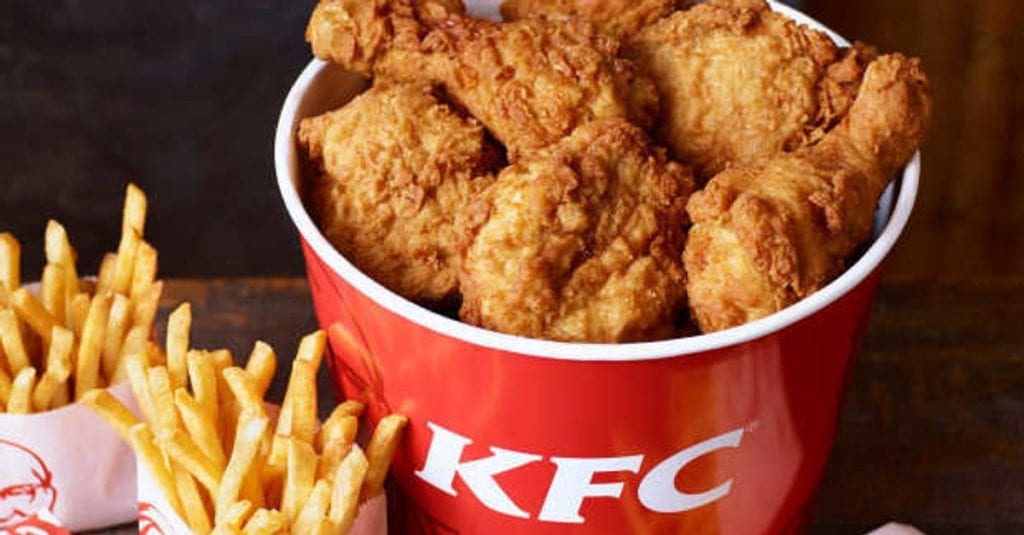
In order to save money and increase the size of their chickens, Kentucky Fried Chicken began genetically experimenting on their livestock. They pumped them full of hormones and altered them to have no beaks, or feathers and to grow multiple wings. At least that was the story making its way around the internet.
The rumor grew fast, spreading across message boards and blogs probably because it had clout, citing a study by the University of New Hampshire. The thing is The University of New Hampshire never wrote that study, and the message board posts all seemed to track back to a few specific tech companies in China.
KFC filed a lawsuit against the companies for slander and won. They also sent a press release to inform the public that they in fact used suppliers that we all know such as Pilgrim’s Pride and Tyson’s. The University of New Hampshire also released a statement denying any involvement with the so-called study and KFC was back in business.
1 Muslim Maccas
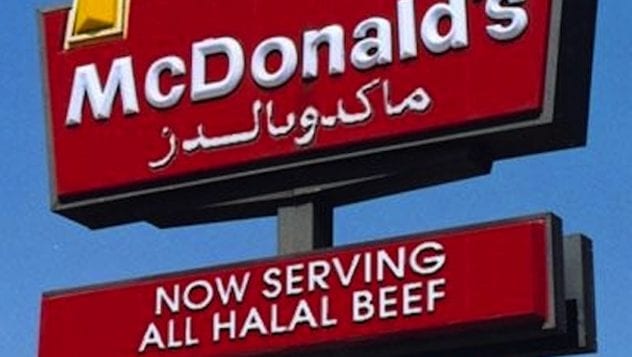
Granted, it would take a LOT to cancel McDonald’s, but that’s not to say that some have tried (and sometimes McDonald’s really WAS in the wrong!) The manner in which McDonald’s prepared their french fries resulted in a slew of lawsuits throughout the 1990s. Many vegetarians felt tricked into believing that the fries were an entirely meat-free product.A 1993 letter from McDonald’s, which was used in one of the lawsuits, reassured a customer that the product was “cooked in 100 per cent vegetable oil.” Indeed, vegetable oil was used. However, beef seasoning had also been used, making the fries nonvegetarian.The lawsuits were finished up in 2002. McDonald’s issued an apology and agreed to pay $10 million to various vegetarian and religious groups.
There have been a number of other high-profile cases relating to misrepresentations by McDonald’s as to what’s in their food. In one instance, a Muslim family in Alabama alleged that pieces of bacon were deliberately and maliciously placed in their McChicken sandwiches. McDonald’s believes that it was an honest accident. However, it has led to a legal case.
Top 10 Design Tricks Businesses Use To Make You Spend Money
About The Author: Jason lives in the suburbs of Cincinnati. He is a lover of all things bizarre and everything 80’s. His first novel, Lyric, was published last year.








